Introduction
Released in 1978 by Atari, Super Breakout is the sequel to the massively influential Breakout (1976). It took the original’s ball-and-paddle gameplay and expanded it with new modes, faster speed, and multi-ball chaos. With sharper visuals and greater challenge, Super Breakout solidified Atari’s legacy in early arcade design and helped push video games toward more dynamic, reactive gameplay.
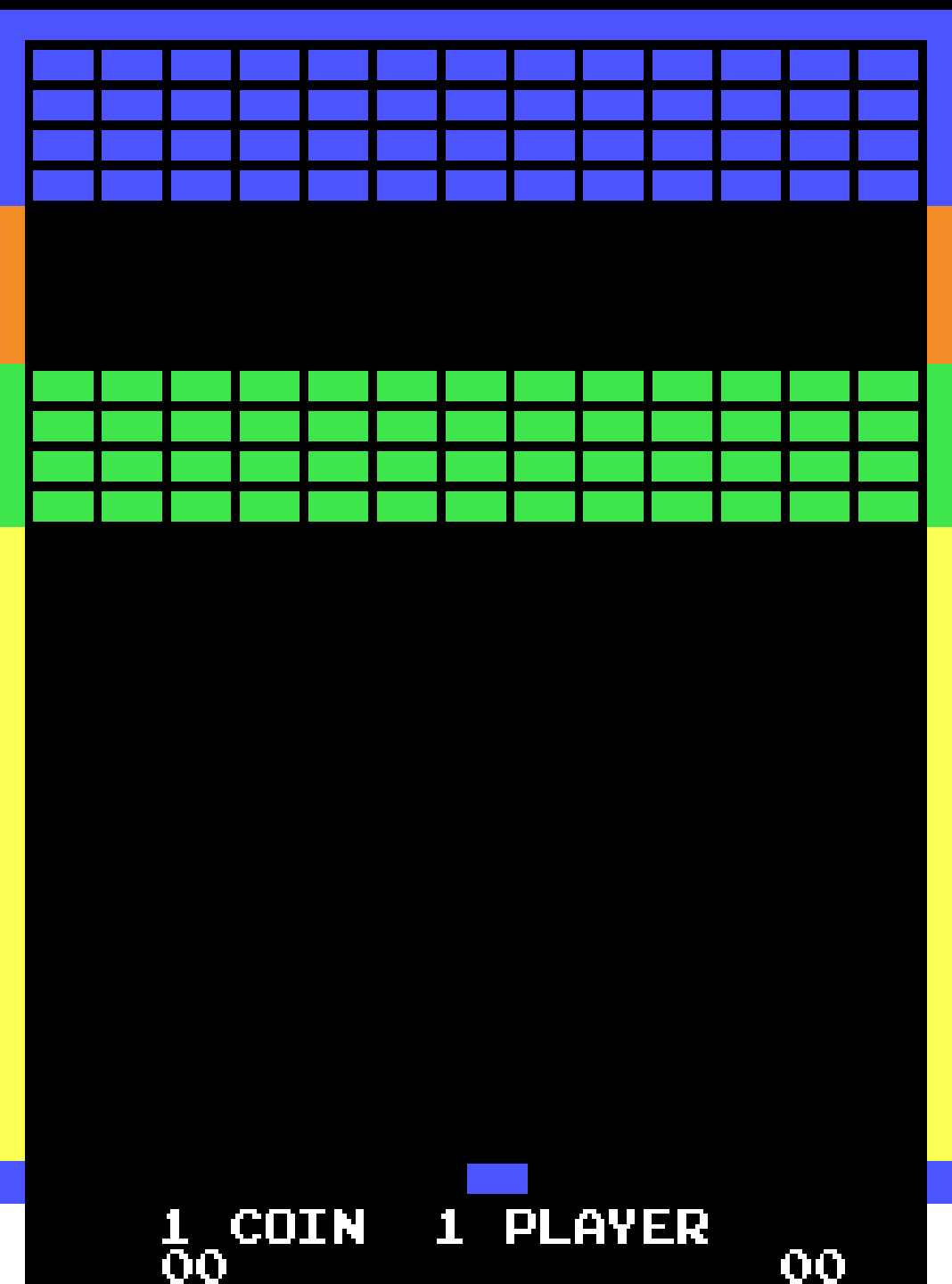
Development and History
- Developer: Atari, Inc.
- Publisher: Atari, Inc.
- Release Date: 1978
Designed by Ed Rotberg and building upon the concepts first implemented by Nolan Bushnell and Steve Wozniak in Breakout, Super Breakout introduced multiple gameplay variations that required new strategies. The arcade hardware also used newer microprocessor technology, enabling more complexity and smoother play than its predecessor.
The cabinet retained the rotary dial control (paddle), but the enhanced challenge and extra game modes marked a clear evolution from the original.
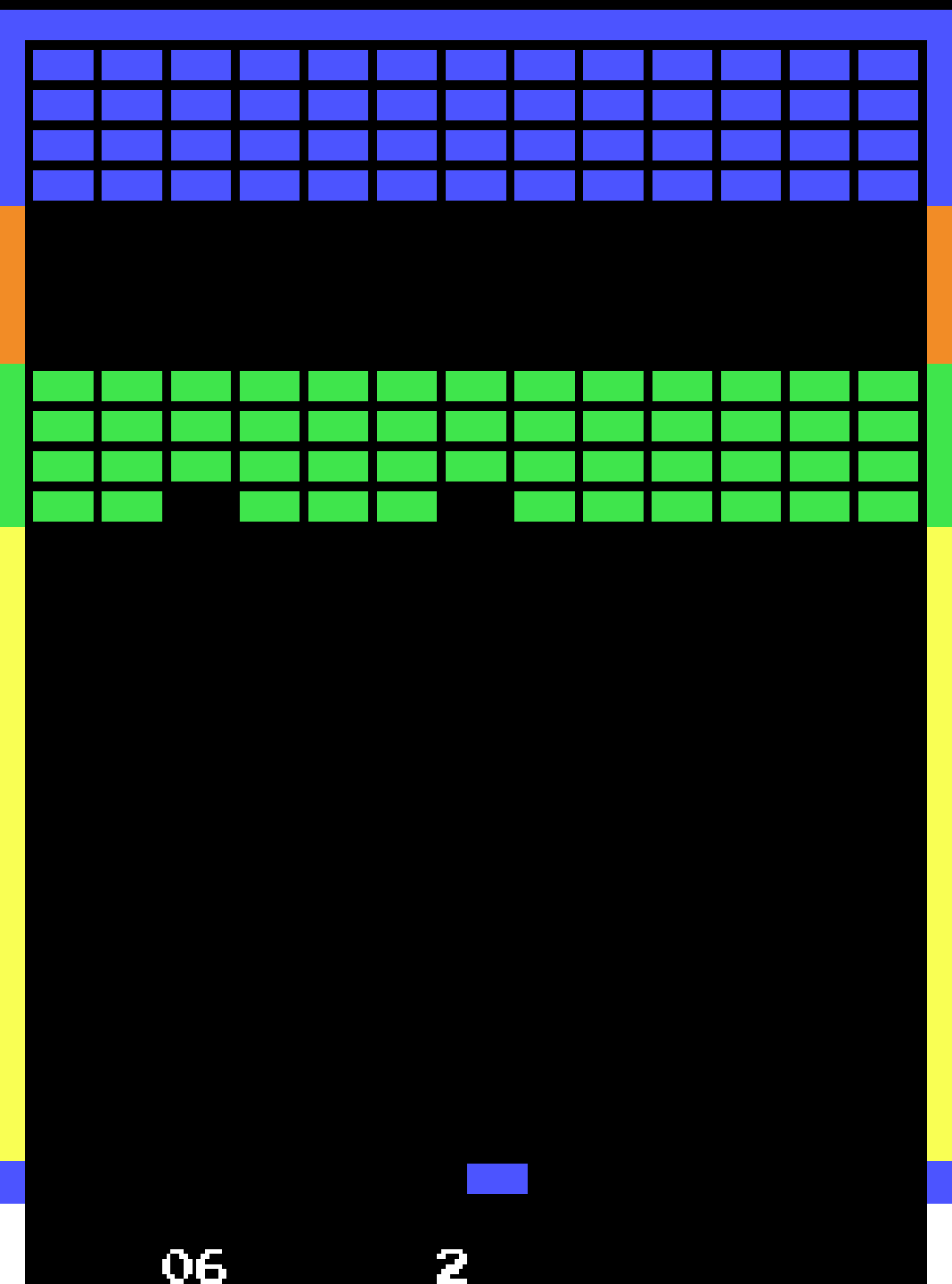
Gameplay Video
Gameplay and Mechanics
Core Gameplay
Players use a paddle to bounce a ball into a wall of bricks, clearing as many as possible before missing the ball.
- Breakout Mode: Classic single-ball gameplay.
- Double Mode: Two balls in play with a double-width paddle.
- Cavity Mode: Starts with one ball and two locked balls in side “cavities” that can be released.
- Increasing Speed: The ball accelerates as bricks are cleared, increasing the difficulty.
- Score-Based Challenge: Points are earned for each brick destroyed, rewarding quick reflexes and consistency.
Challenges
- High-Speed Action: The ball becomes harder to track over time.
- Multi-Ball Chaos: In Double and Cavity modes, keeping track of multiple balls is key.
- Limited Lives: Each missed ball costs a life, putting pressure on every move.
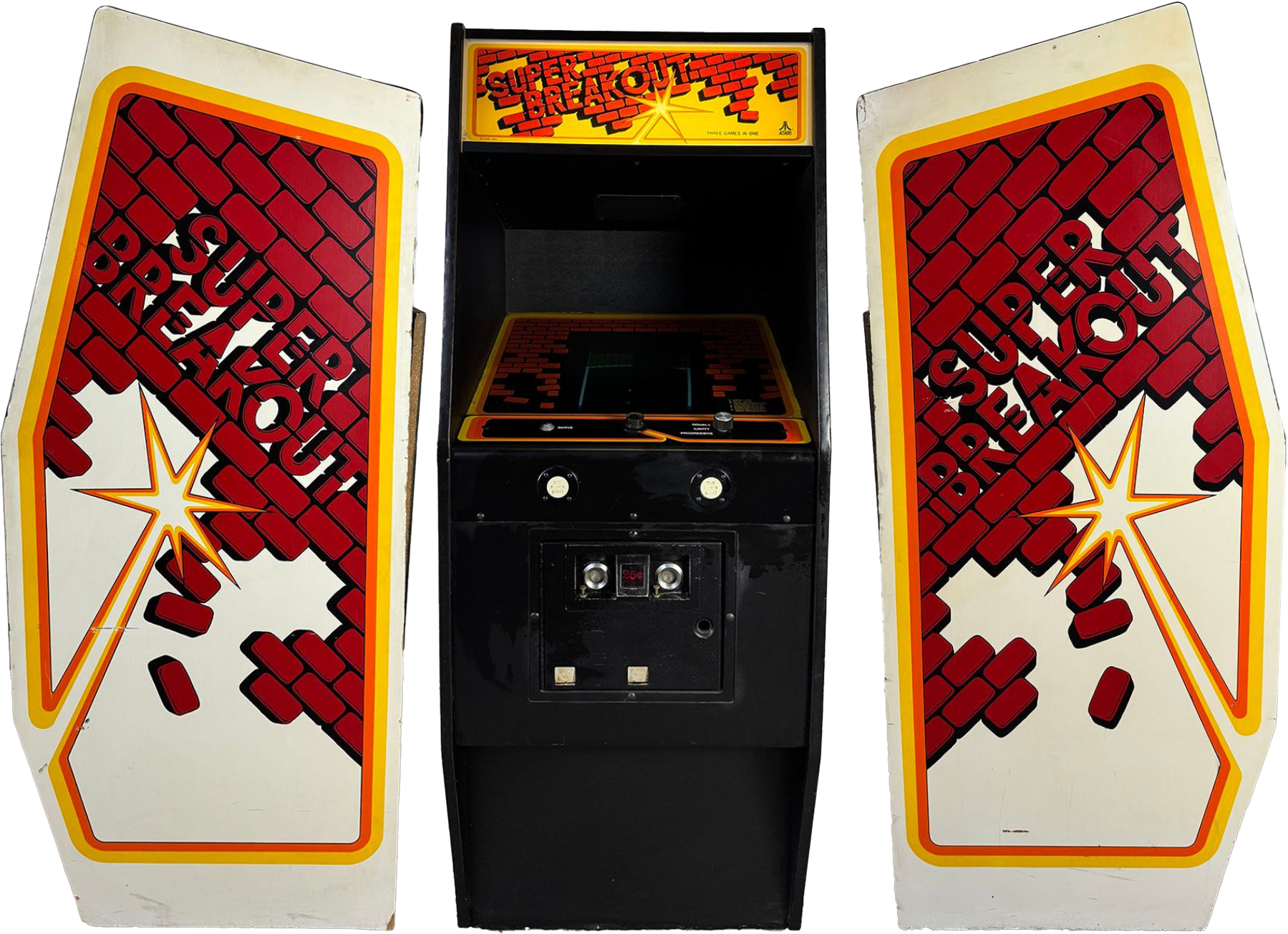
Cultural Impact and Legacy
- Arcade Longevity: Remained a popular cabinet due to its fast, addictive gameplay.
- Home Ports: Appeared on Atari 2600, 5200, and other early consoles.
- Influence on Future Titles: Inspired later classics like Arkanoid by adding variety and power-up potential.
- Marketing Angle: Atari occasionally promoted it with a space-themed aesthetic.
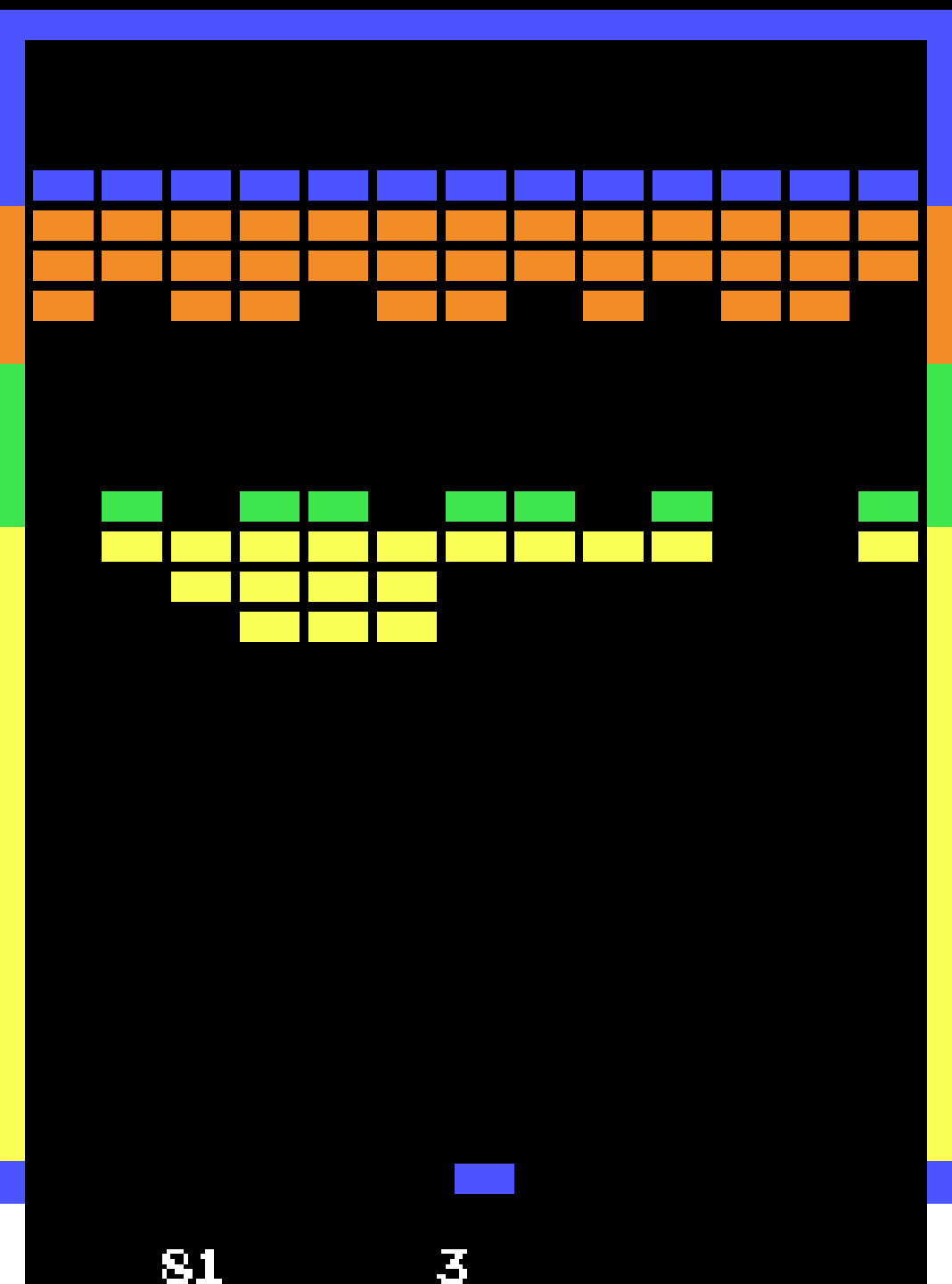
Fun Facts
- First Game in Space: Played aboard the space shuttle Columbia in 1983.
- Wozniak’s Legacy: Apple co-founder Steve Wozniak built the original Breakout prototype, paving the way for Super Breakout.
- Color Overlay Tech: Used cellophane overlays to simulate full-color graphics.
- Sound Simplicity: Relied on beeps and hits rather than music or sound effects.
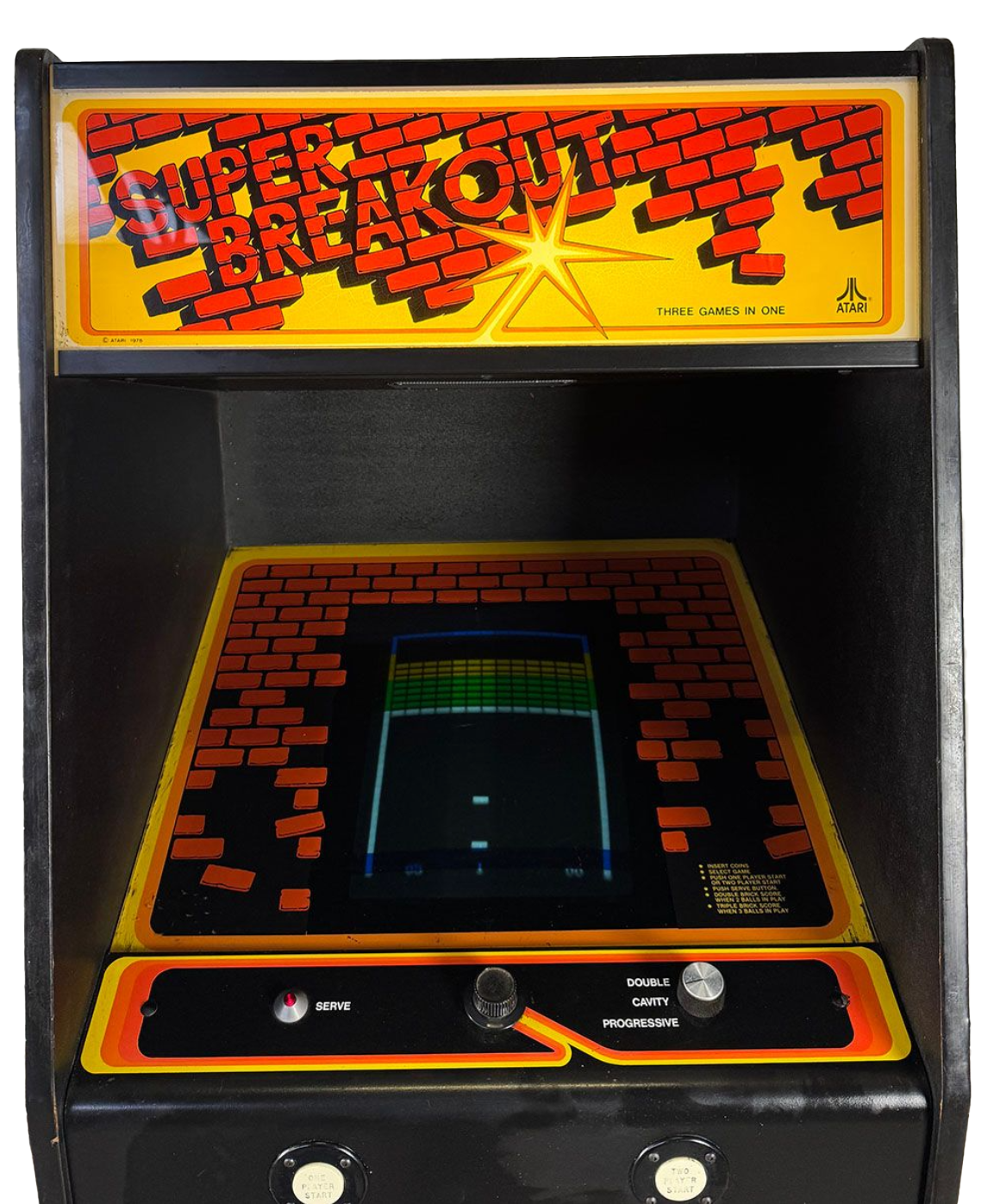
Conclusion
Super Breakout didn’t change the rules—it perfected them. With new game modes, enhanced challenge, and polished execution, Atari’s sequel remains a definitive example of early arcade game evolution.

